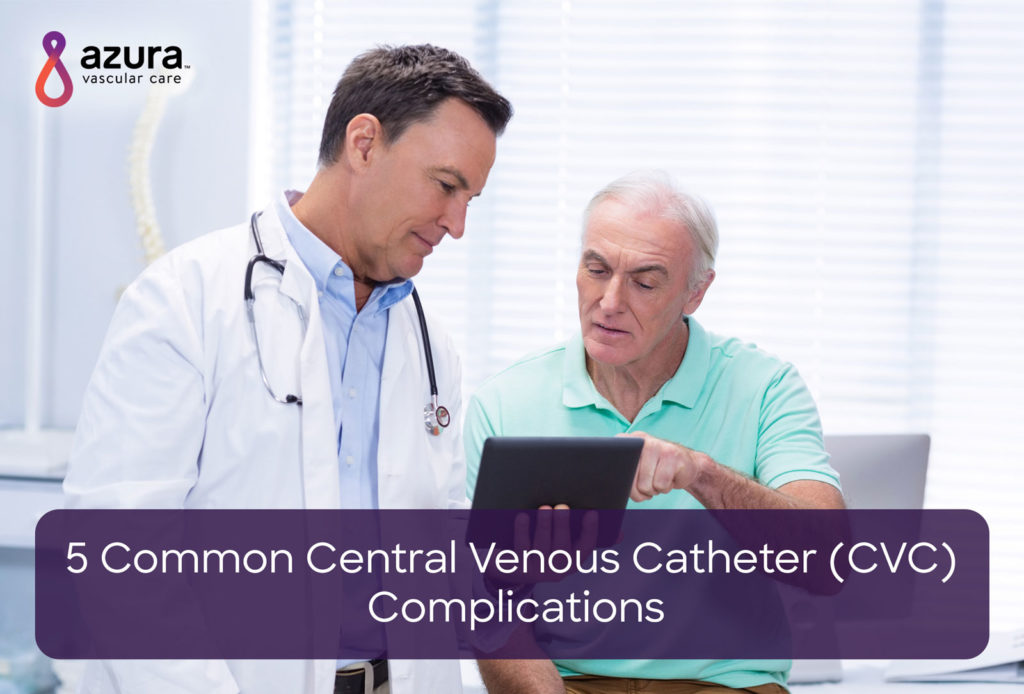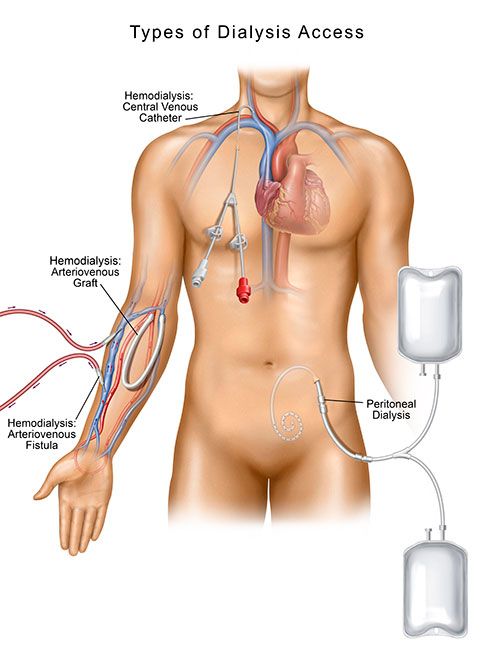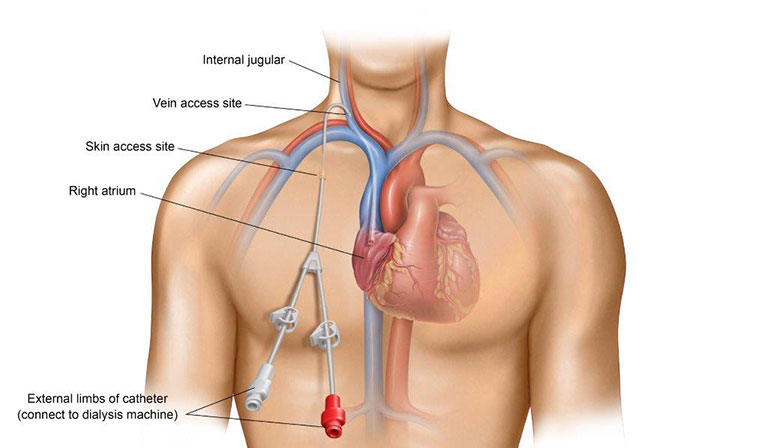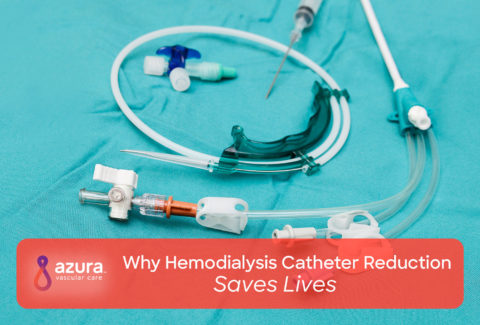
If you need hemodialysis, chances are you might need to have a central venous catheter (CVC) placed, at least temporarily, until you can receive another more permanent dialysis access. Understanding what exactly this means for you and your family can be overwhelming and confusing, especially when there could be complications to consider that may affect your health and lifestyle. Educating yourself early on about those complications will help you to prepare.

Exactly What is a Central Venous Catheter?
For people who need to start hemodialysis immediately, a CVC might have to be placed. A CVC is a long, y-shaped, hollow plastic tube that is inserted though one of the central veins found in your neck, chest or groin.

Getting a Central Venous Catheter
While CVCs are not considered the best access option and are generally avoided when possible, patients unable to immediately get a fistula or graft, or if their fistula or graft are in the process of healing, may need for a temporary access. In this case, a nephrologist, interventional radiologist or vascular surgeon may have to place a CVC.
With more than 5 million CVCs are placed every year in the United States, it’s important to understand that major complications can occur with CVCs. i
The 5 Most Common Central Venous Catheter Complications
- Damage to central veins
- Pulmonary, or lung, complications
- Cardiac, or heart, complications
- Device dysfunction
- Infection
Let’s look at each of these potential complications separately.
Central Venous Catheter Complication #1: Damage to Central Veins
Damage to central veins, including injury, bleeding and hematoma (a swelling that consists of clotted blood), can occur during CVC placement. Studies shows that puncture of a vein occurs in 4.2–9.3% of catheter placements.ii, iii Injury to the vein occurs more often when the catheter is inserted into the femoral vein found in the leg, and less often when it’s placed in the internal jugular vein.iv
Central Venous Catheter Complication #2: Pulmonary Complications
During the CVC insertion procedure, a number of lung-related complications can occur, including:
- Fluid can build-up of between the lining of your lungs and your chest cavity.
- Injury can occur to your windpipe, or trachea.
- Injury can occur to the laryngeal nerve, which controls your voice box.
- Air embolism, or a blockage of blood supply caused by air bubbles, can occur.iv
Central Venous Catheter Complication #3: Cardiac Complications
Cardiac complications such as abnormal heart rhythms or, although rare, a complete shutdown of the heart, also called cardiac arrest, may occur during placement of a CVC.
Central Venous Catheter Complication #4: Device Dysfunction
A number of complications can occur that are directly related to the device, or catheter, but these generally take anywhere from weeks to months to recognize. Potential complications from device dysfunction include:
- Cracking or breaking of the catheter itself.
- Thrombosis, or a blood clot.
- Obstruction of the catheter.
RELATED: Read our 10 tips to keep your dialysis access functioning
Central Venous Catheter Complication #5: Infection
Central venous line infections become established when a thin slimy film known as biofilm, collects on the internal and/or external surface of the catheter. The two most common bacteria, that make up a CVC-related biofilm are Staphylococcus aureus and Staphylococcus epidermidis.iv Both of these bacteria are commonly found on your skin’s surface.
If it’s suspected that you might have a CVC infection, blood cultures will be drawn from separate sites and antibiotics will be prescribed.
A CVC is not recommended for most people as a permanent method to provide dialysis access due to the potentially serious central venous catheter complications that can arise. However, for those needing immediate access, a CVC may be the best option – even if it’s just a temporary solution.
Sources:
i McGee, D.C., and Gould, M.K. (2003) Preventing complications of central venous catheterization. New England Journal of Medicine 348:1123–33.
ii Bowdle, A. (2014) Vascular complications of central venous catheter placement: Evidence-based methods for prevention and treatment. Journal of Cardiothorac Vascular Anesthesia 28:358–68.
iii Vats, H.S. (2012) Complications of catheters: Tunneled and nontunneled. Advances in Chronic Kidney Disease. 19:188–94.
iv Kornbau, C., Lee, K. C, Hughes, G. D., and Firstenberg, M.S. (2015) Central line complications. International Journal of Critical Illness and Injury Science 5(3): 170–178.


